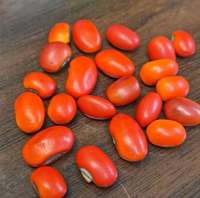Erythrina berteroana is an agroforestry tree with many uses including animal fodder and soil improvement. Research by Tropical Agricultural Research and Higher Education Center (CATIE) supports its benefits and production in practice. Native to Central America, common names of E. berteroana include helequeme, coral bean, and pito.
A 10 m tree or a pruned shrub (for fodder), E. berteroana ranges from southern Mexico to Peru and has been introduced to the Caribbean and Tanzania (CABI, 2016). Hummingbirds pollinate its bright red, ornamental flowers. Introduced for coffee shade in Costa Rica, farmers replaced it with other species because it did not offer sufficient shade. It is still found on many farms because of its usefulness for fodder.
Uses
People commonly use E. berteroana for live fencing because its spines form an impenetrable barrier. Farmers use it in windbreaks and fodder banks. Horticulturists also use it as a live support for crops such as black pepper (Piper nigrum L.), granadillo (Passiflora ligularis), yam (Dioscorea alata), and vanilla (Vanilla planifolia Andr.) (Mueschler et al., 1993).
E. berteroana adapts readily into agroforestry systems. Its wood is not a precious hardwood and finds its functional use as stakes and live support for trellised crops.
CATIE (2003) recommends pruning trees every 6 months. E. berteroana responds well to pruning, producing 1885 kg of biomass per year and supplying 33.6 kg nitrogen. The pruned material is useful for soil amendment, mulch, and fodder. Fodder is high in protein, which increases the benefit to animals produced.
Propagation

Figure 11. E. berteroana seeds. Source: Holly Sobetski
Propagate E. berteroana from seed or stem cuttings. Scarify seeds with sandpaper or a knife or treat them by soaking in hot water (40° C) for 12 hours. Small stakes or post- size cuttings for live fences (2.0 to 2.5 m, 5 to 8 cm diameter) sprout readily.
Pests
The Erythrina Stem Borer (Terastia meticulosalis) burrows into trees of Erythrina spp., causing death. Later infestations affect the pods and seeds (University of Florida, 2021).
Adults of Phyllophaga menetriesi feed on young and tender leaves of Erythrina spp. The larvae (white grubs) are pests of agroforestry plants like young coffee, causing root damage and facilitating pathogen entry (OFI-CATIE, 2003).
Environmental requirements
- Elevation–300 to 600 m (planted up to 1000 m).
- Rainfall–1500 to 3500 mm per year
- Soil–heavy textured, neutral to acidic, tolerates seasonal waterlogging
- Temperature Range–16 to 28° C, 18 to 26° C ideal
Source: OFI-CATIE, 2003
This useful tree will serve you in your agroforestry system, live fence, or as an ornamental. Active development workers who are ECHOcommunity members may request a trial packet of this or other seed.
References
CABI. 2016. Erythrina berteroana. Commonwealth Agriculture Bureau International Compendium. https://doi.org/10.1079/cabicompendium.
OFI-CATIE. 2003. Arboles de Centroamérica. Un Manual para Extensionistas. Cordera, J. and Boshier, D.H. (Editors). OFI (Oxford Forestry Institute) - CATIE (Centro Agronómico Tropical de Investigación y Enseñanza). Turrialba, Costa Rica.
Muschler, R., P.K. Nair, and L. Meléndez. 1993. Crown development and biomass production of pollarded Erythrina berteroana, E. fusca and Gliricidia sepium in the humid tropical lowlands of Costa Rica. Agroforestry Systems (24) 123-143.
University of Florida. 2021. Erythrina Moths Terastia meticulosalis Guenée and Agathodes designalis Guenée. Institute of Food and Agricultural Science (IFAS), University of Florida, Gainesville, Florida